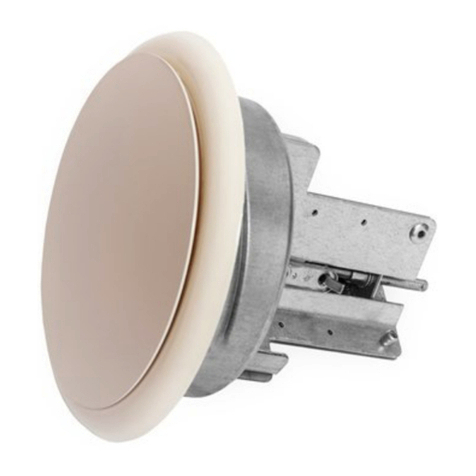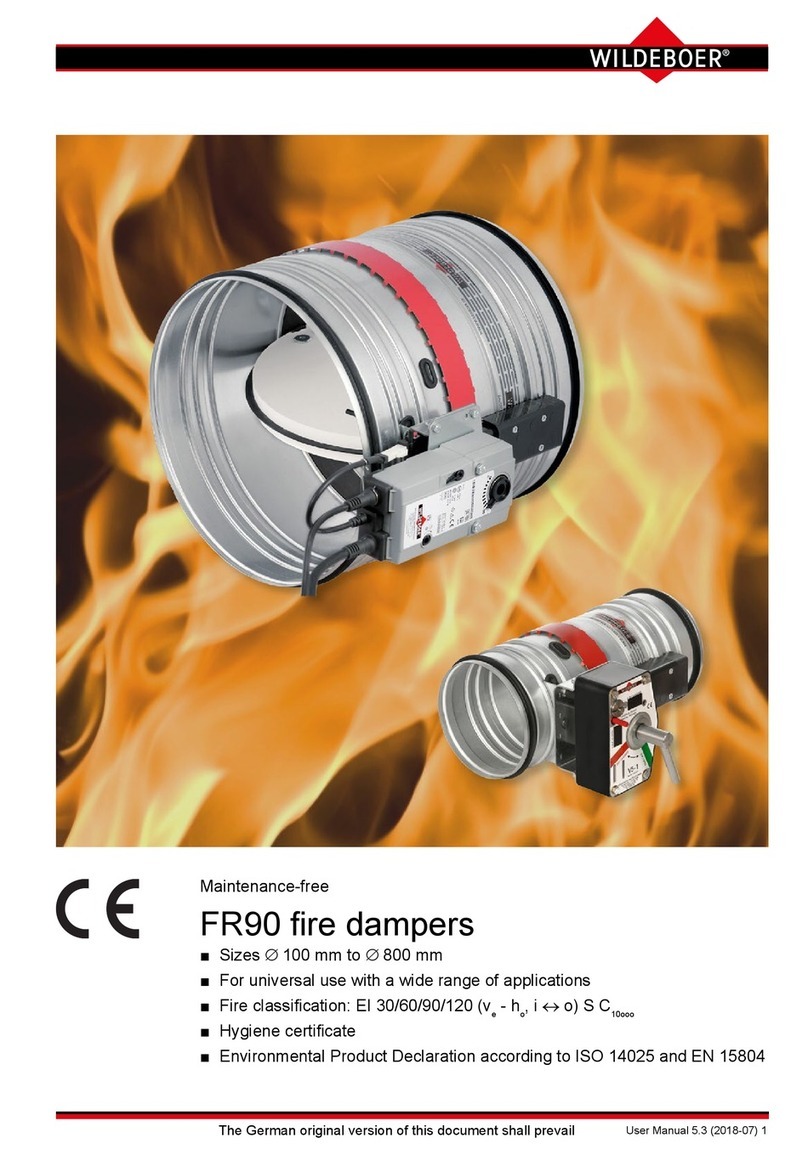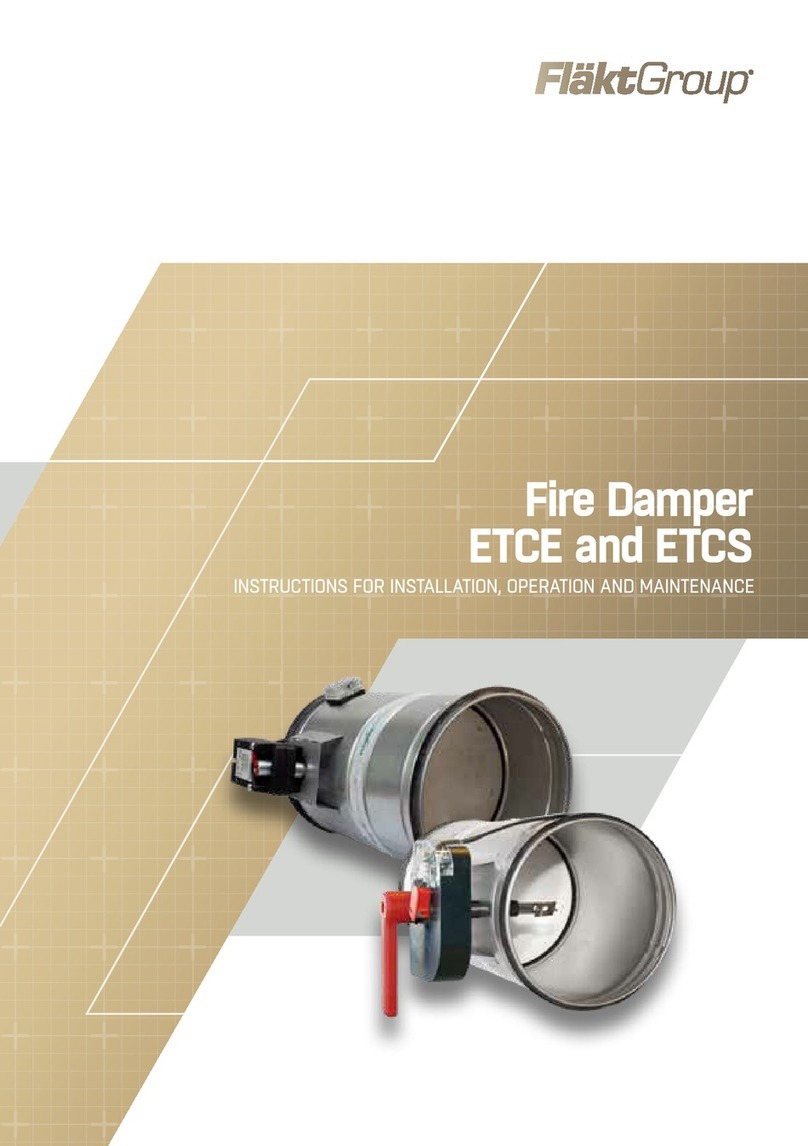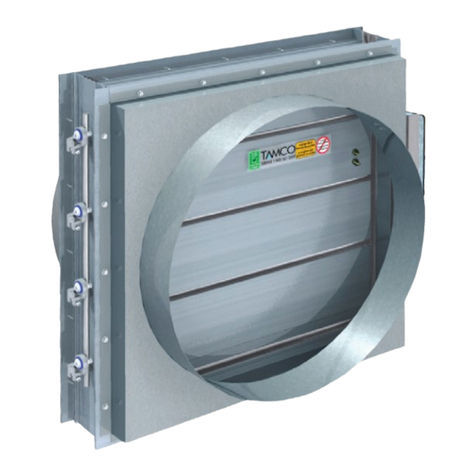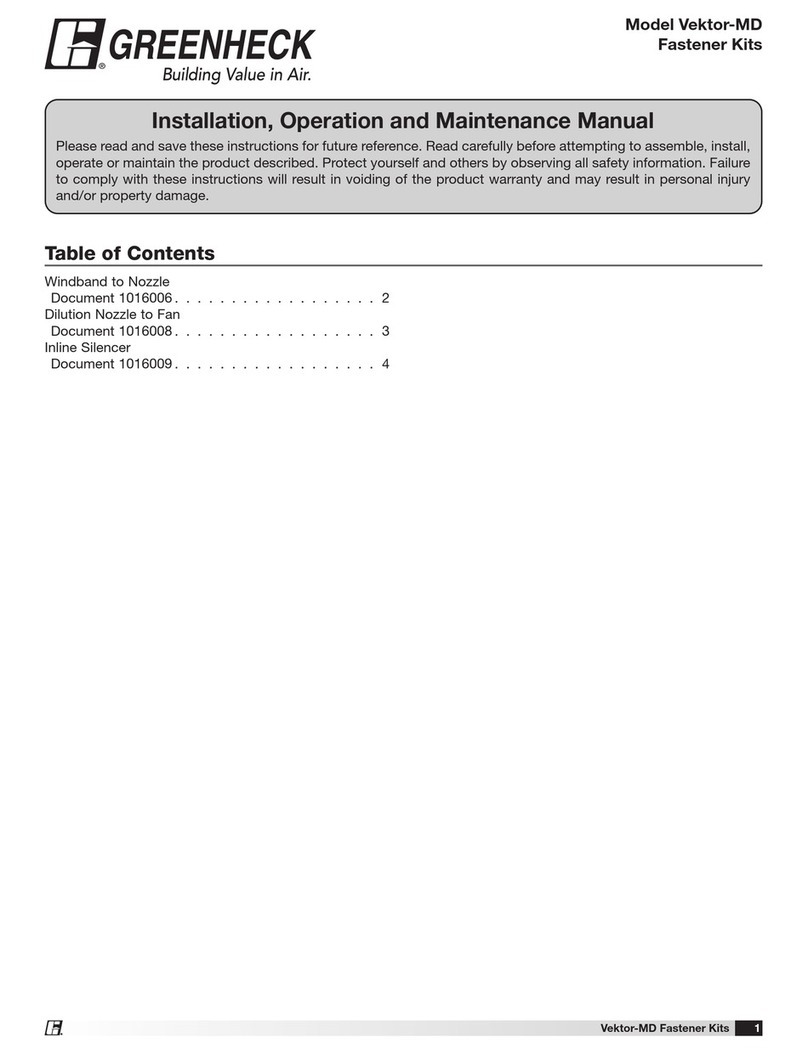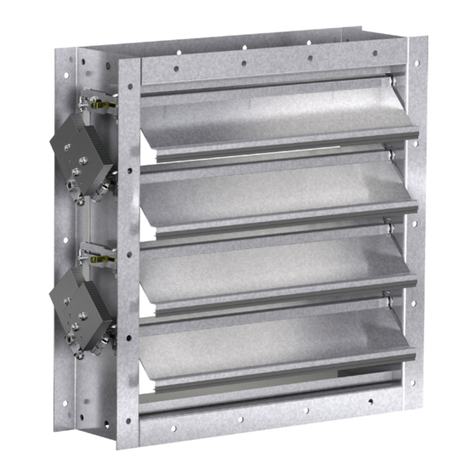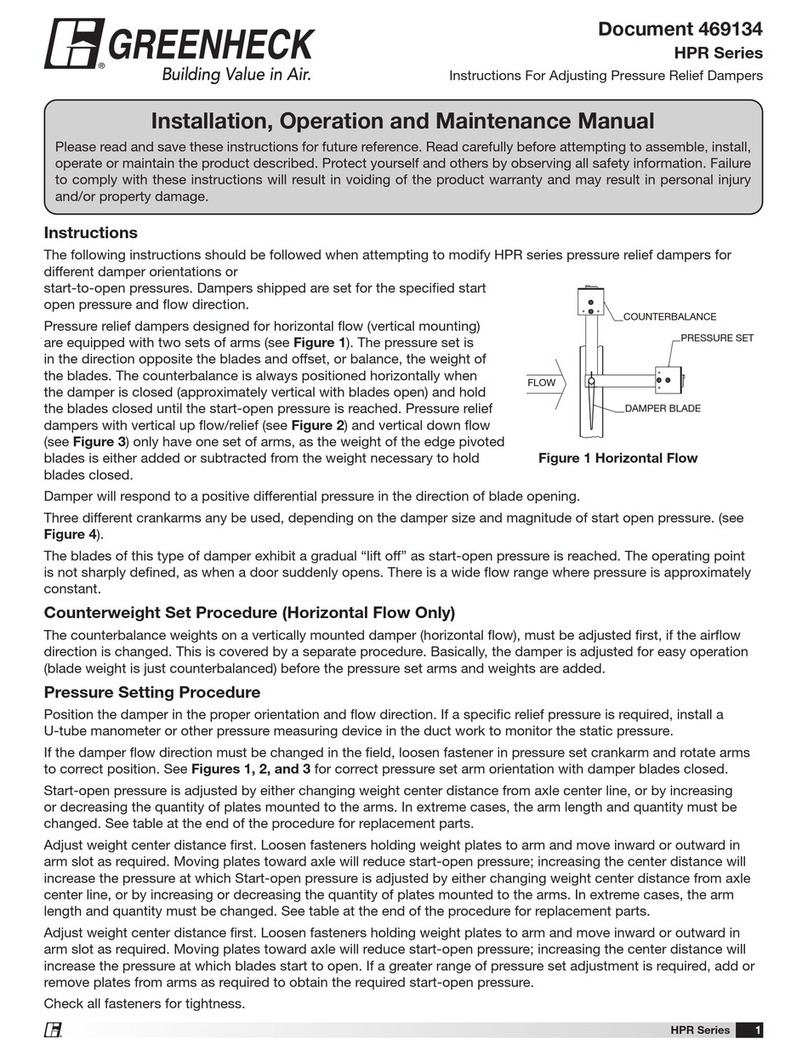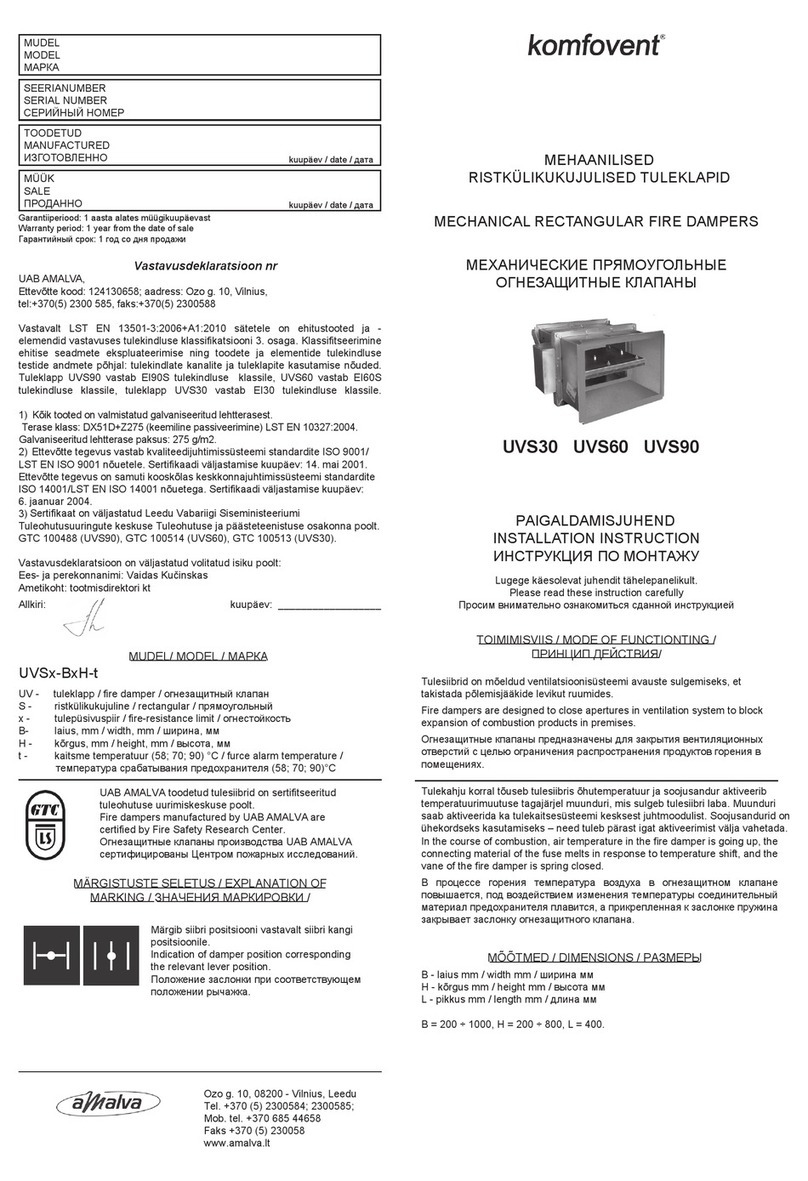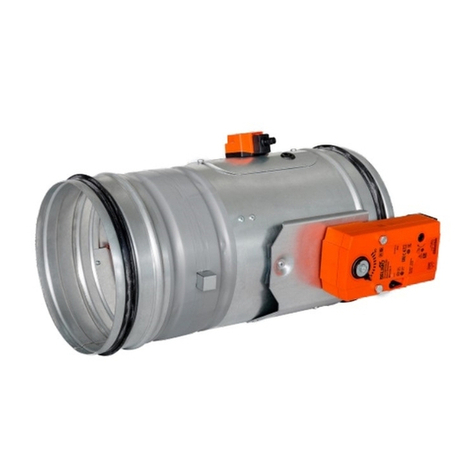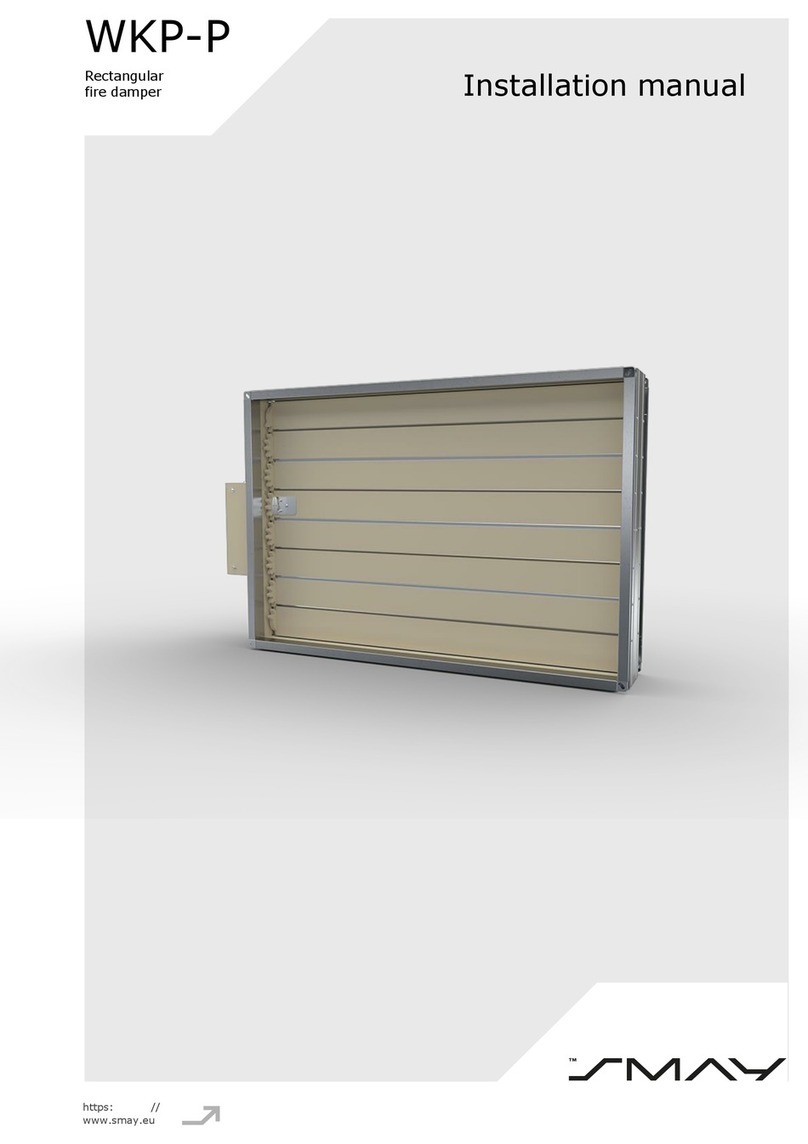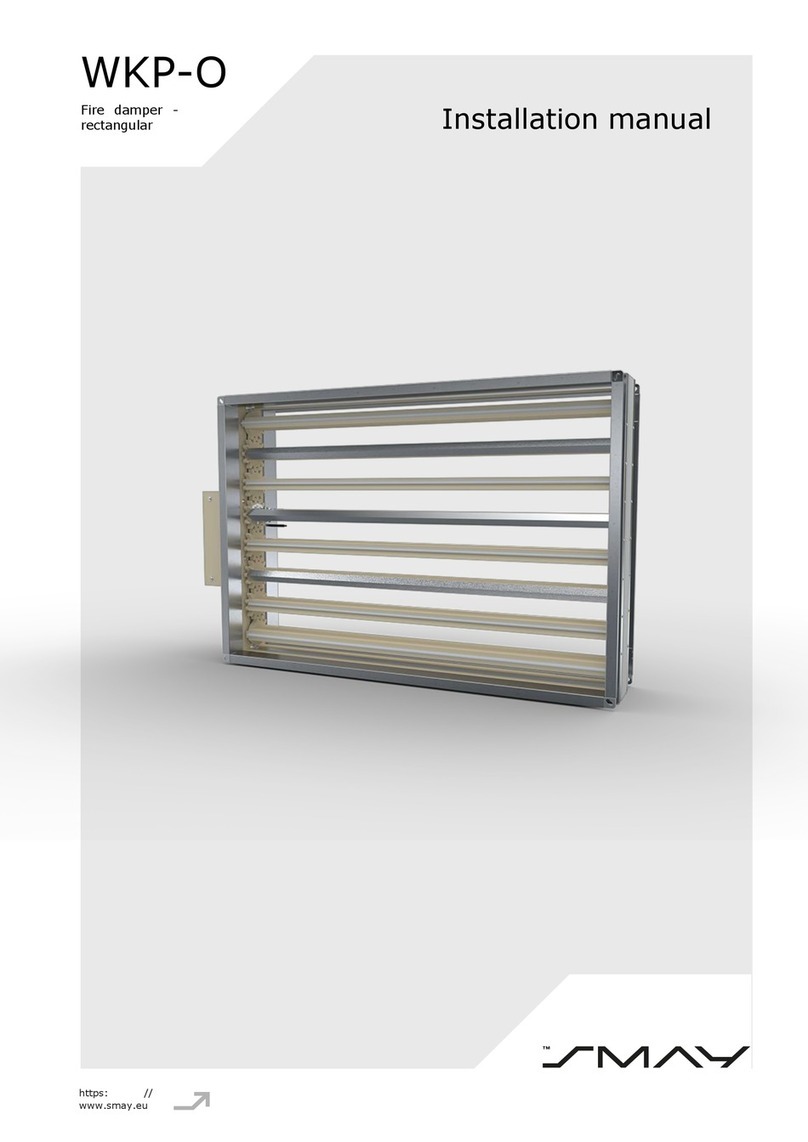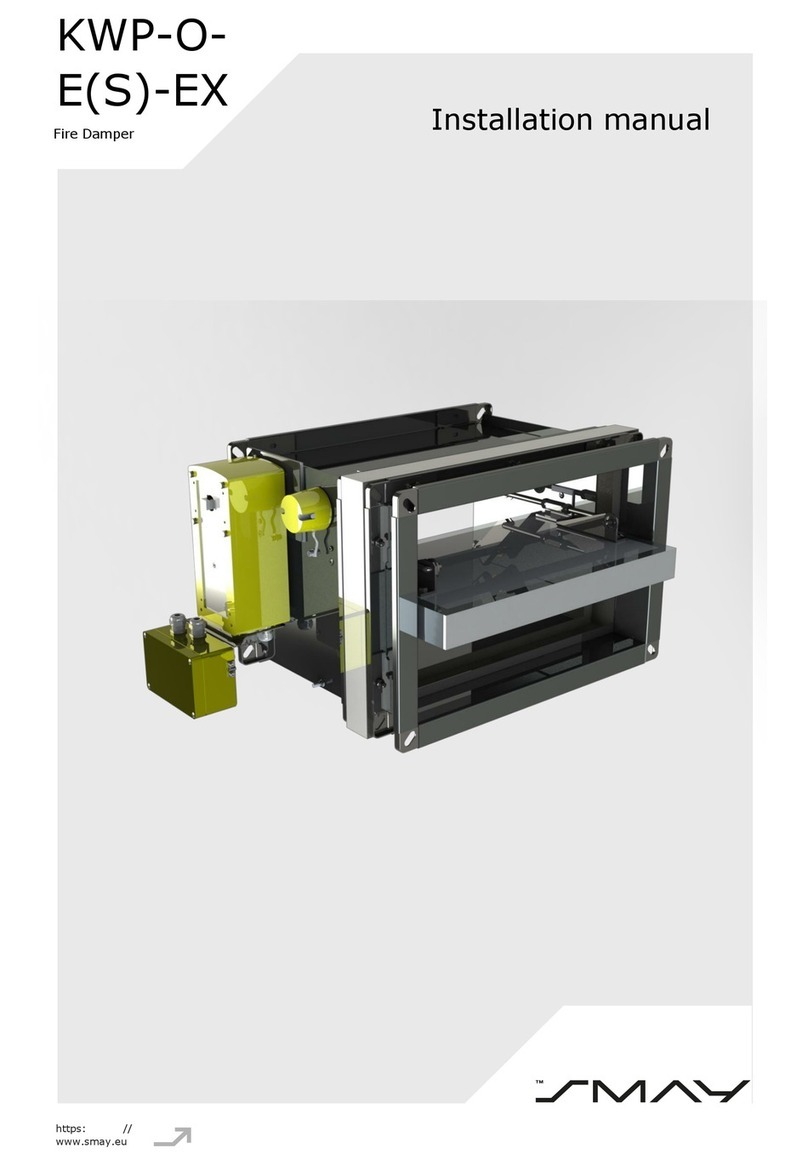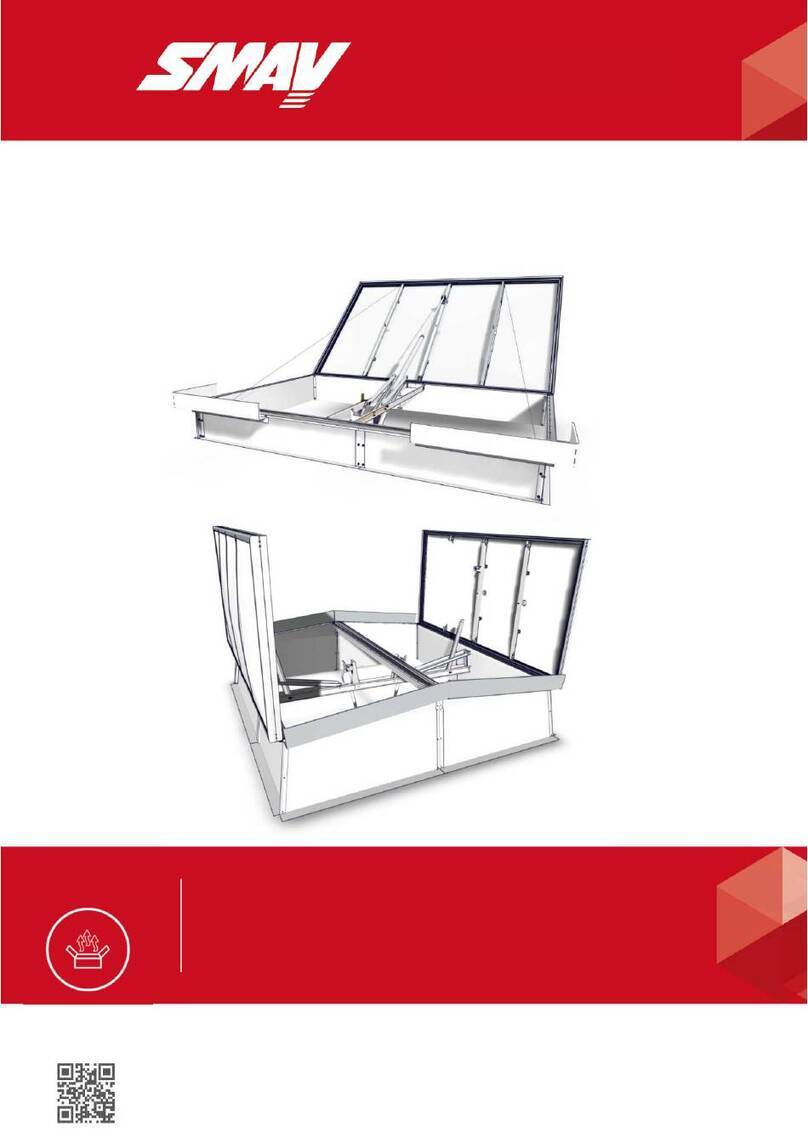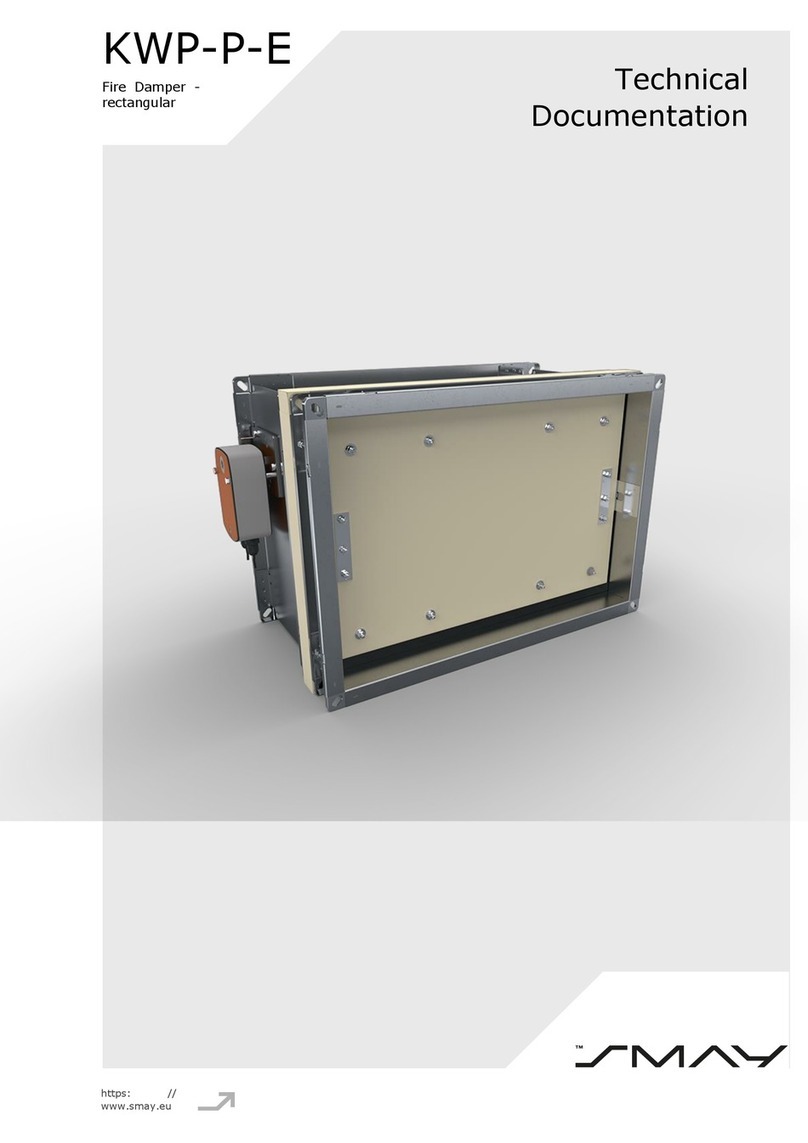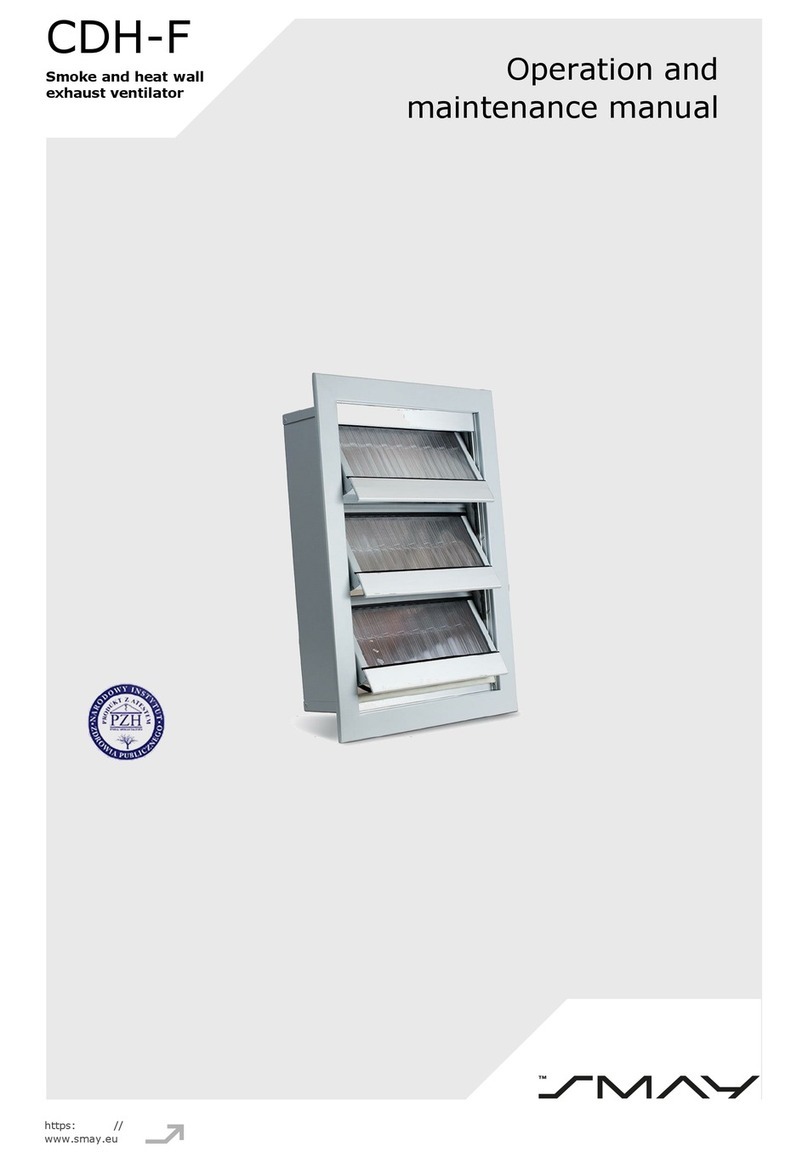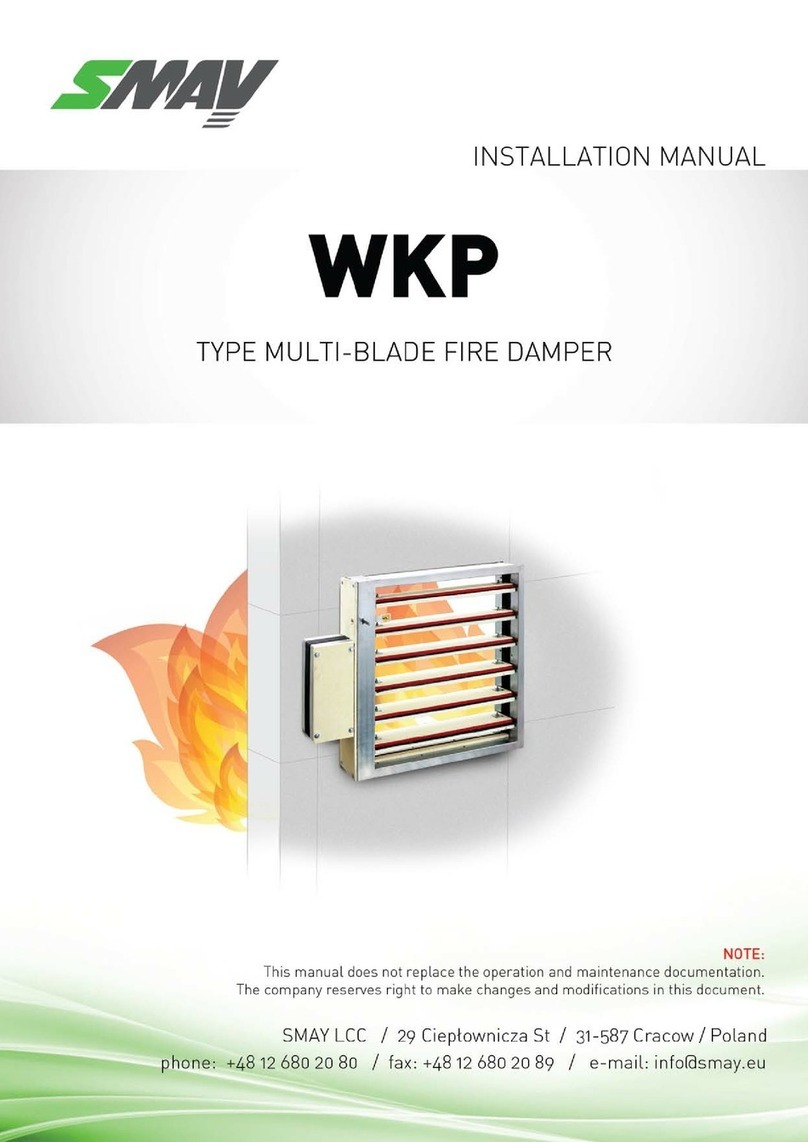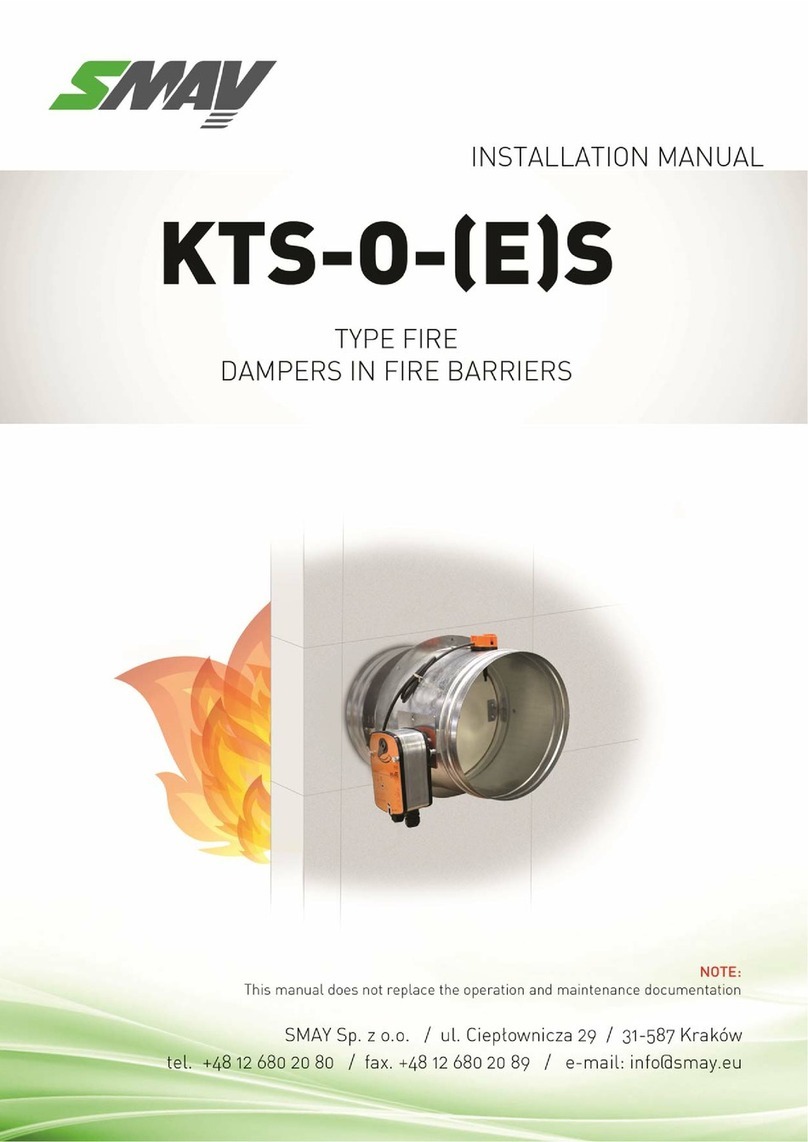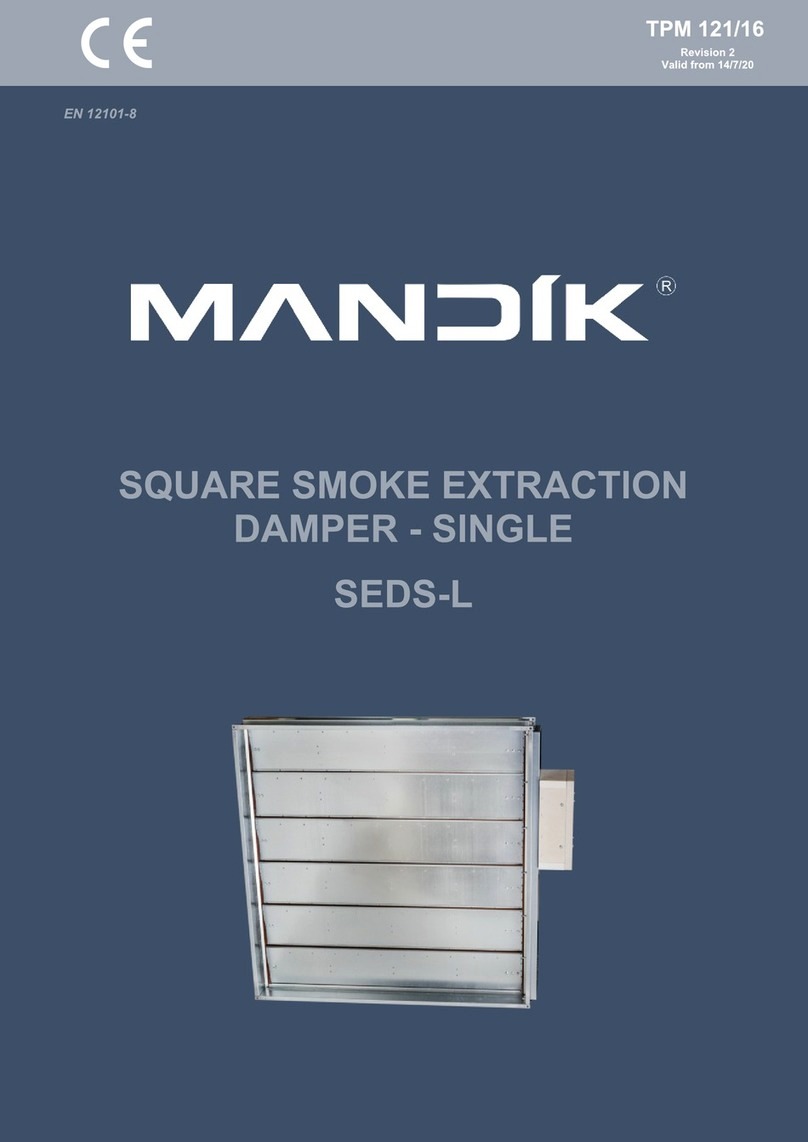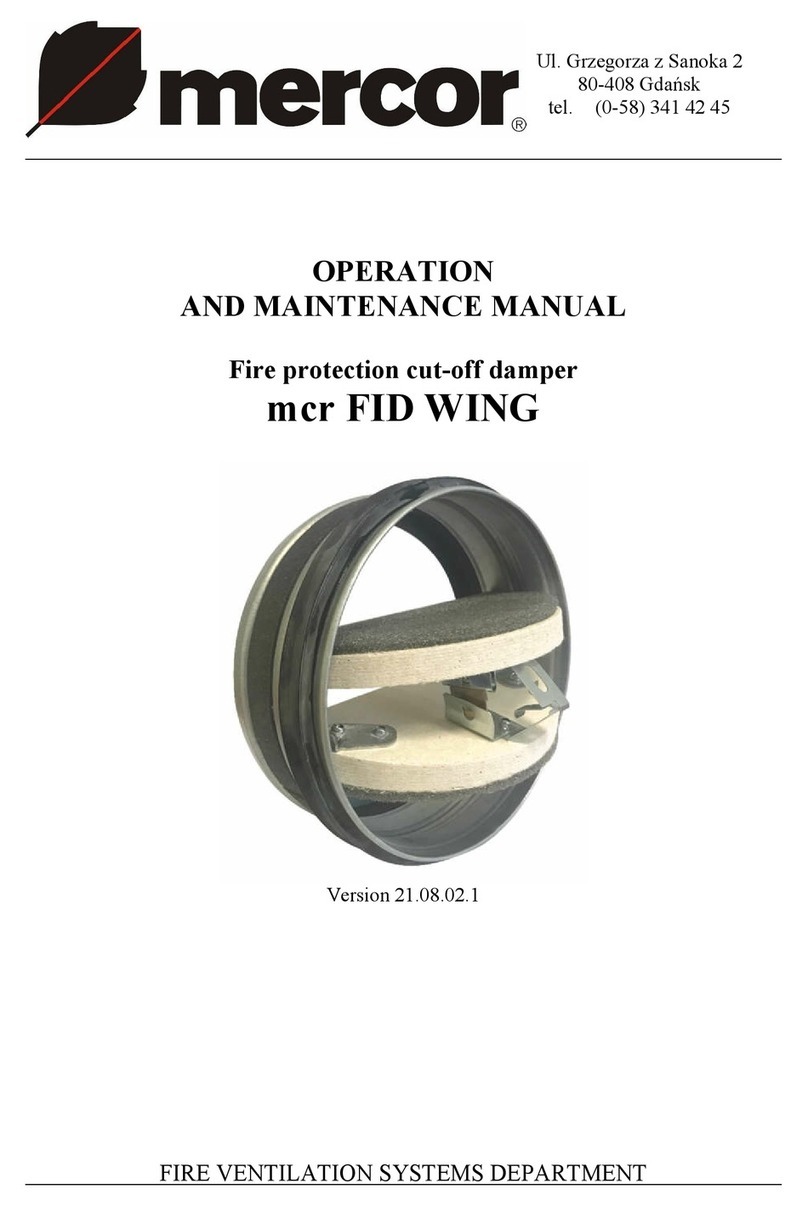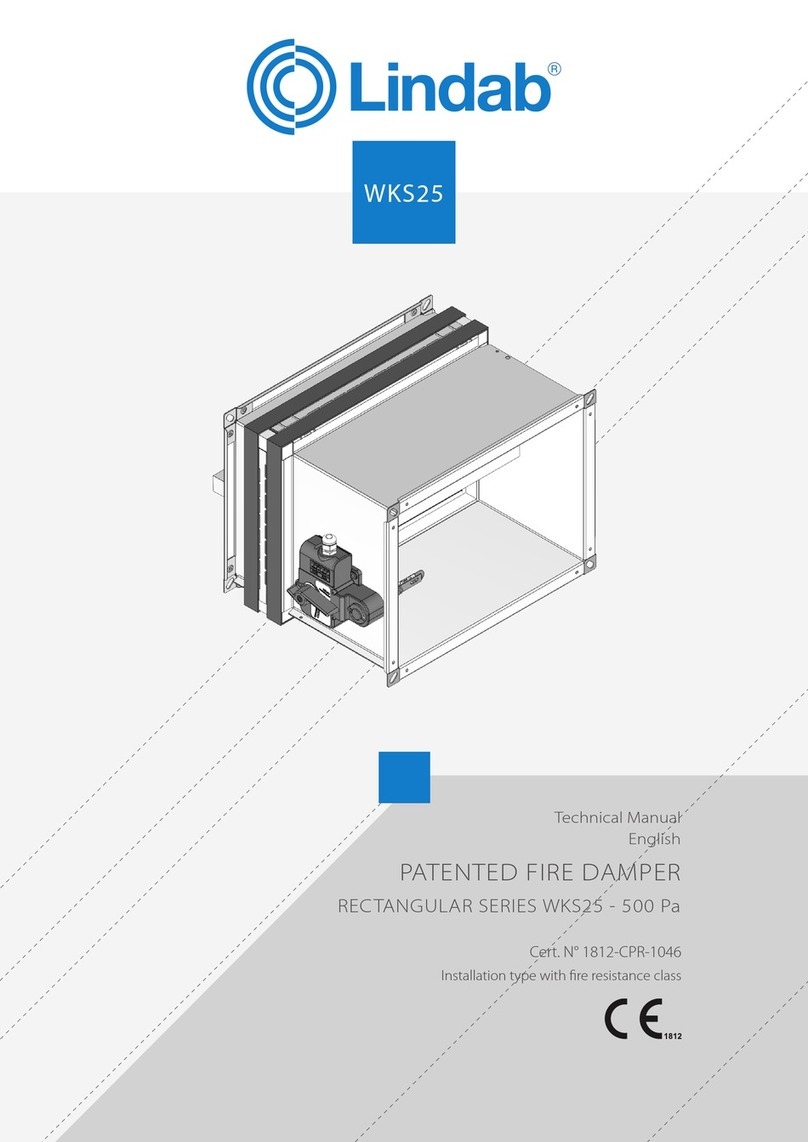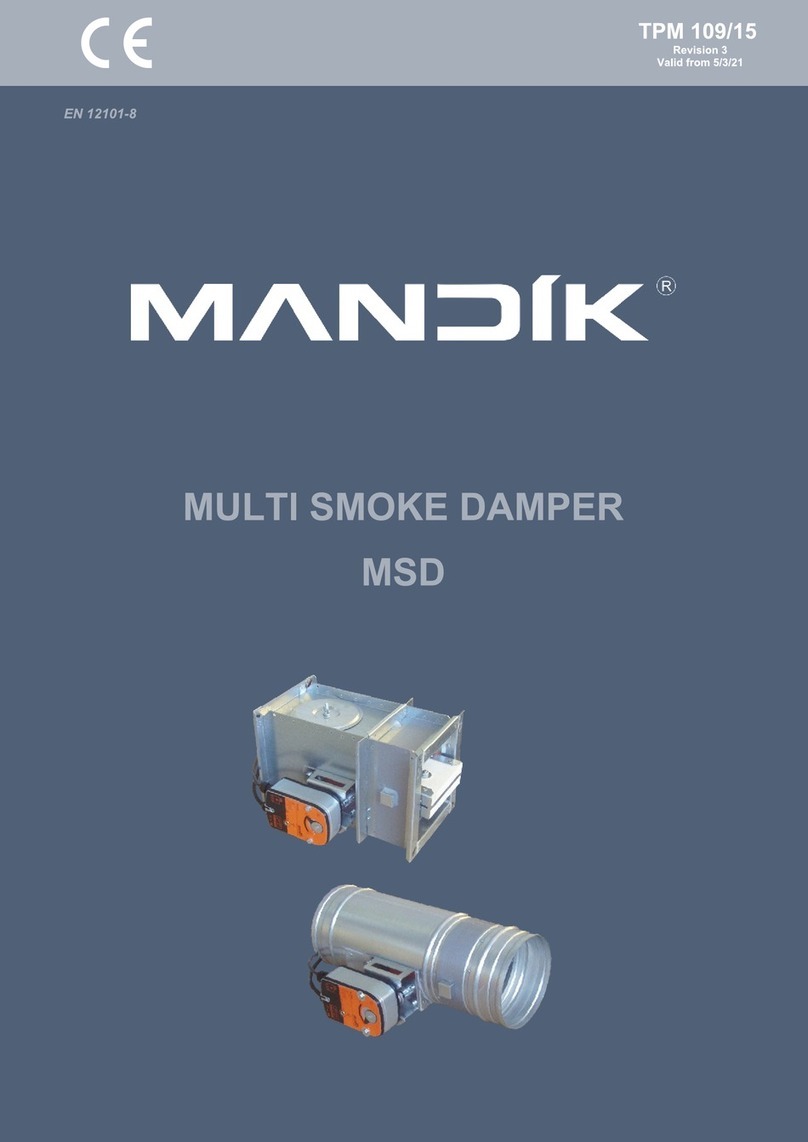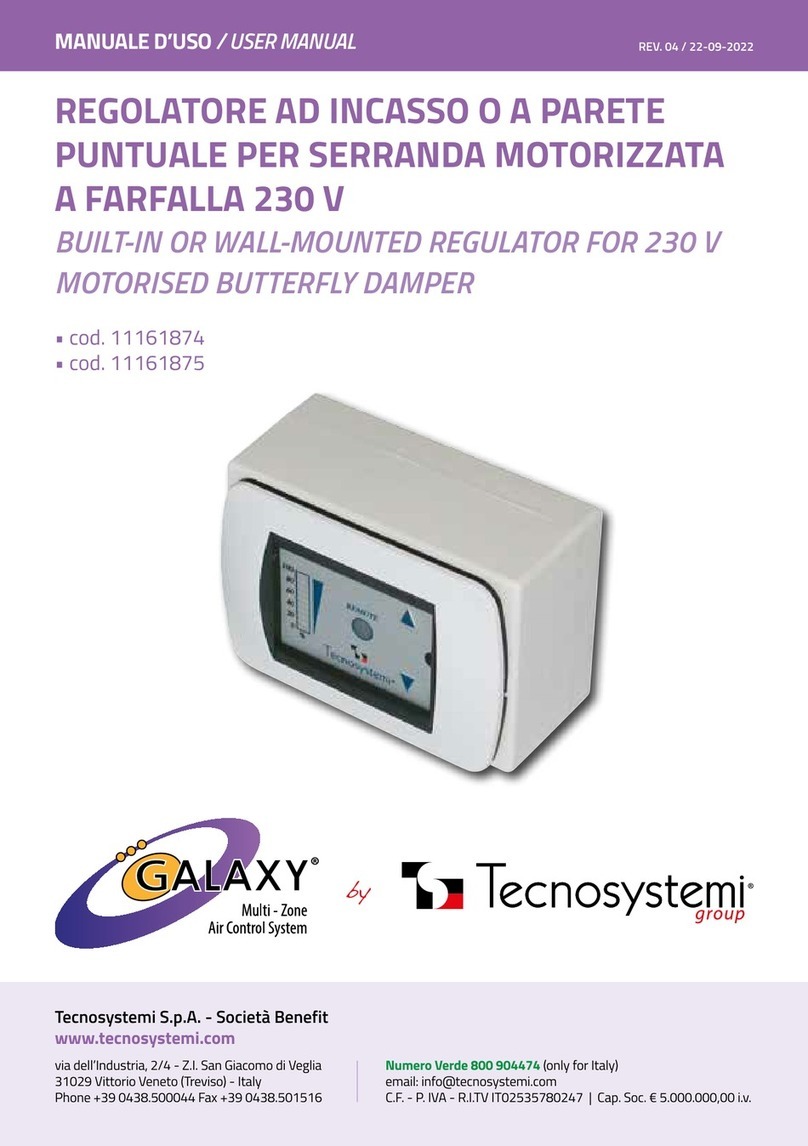INSTALLATION TECHNOLOGY
Before installing the fire dampers, make sure that there are no damage, during transport or storage, that could block
the baffle.
Check that the baffle can be opened and closed (full opening and closing position). To open fire dampers KTM use the
actuator key.
The opening and closing must proceed smoothly (not stepwise).
Do not pull by baffle to open or close fire damper, it may cause permanent damage, not covered by the warranty.
During KTM damper test, with size DN>125, while opening baffle, fold back the bumper (as shown on the fig. 5) so as
to unlock the bolt caught on it, allowing free rotation of the baffle.
Figure 1. KTM baffle opening method
Before installing, secure the fire damper, by dust and dirt, using a foil or other screening material. It can prevent
components of fire damper by damage.
Dampers to preserve of the declared resistance, insulation and smoke leakage EIS120, EIS90, EIS60, EIS30, should
be installed on wall, which was classified as EIS120, EIS90, EIS60, EIS30.
It is allowed to install KTM dampers in wall with other fire-resistance, should be remembered that fire-resistance in
this situation is resistance of lowest classified (in this regard) element in this system.
Ducts made of flammable and non-flammable materials can be connected to the damper. Ducts should be installed
that they cannot load the damper during fire. Ducts lengthening during fire can be compensated by support and knee.
ATTENTION: Distance between fire dampers or fire damper and construction elements must be:
a) min. 10 mm between fire damper, which are installed in different ventilating wires,
b) min. 10 mm between fire damper and construction element (wall/ceiling).
